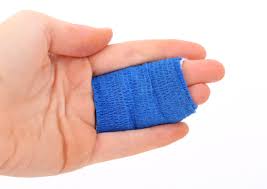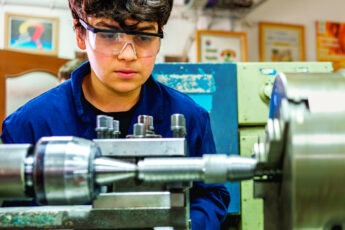By Donna Motley, Vice President of Claims
One of the important reasons we stress an injured worker should seek medical treatment soon after an injury is to obtain an accurate diagnosis. what may appear to be a “simple cut or laceration” may actually be diagnosed as a “nicked” or lacerated tendon. An MRI may be required for an accurate diagnosis.
Tendons attach or connect muscle to bone, which in turn allows for movement at the joint. Tendons control your hand and fingers, wrist, elbows, feet and toes, ankles and shoulders. Tendon laceration will result in trouble in bending or straightening the (attached) body part. These injuries typically require surgery. Hands and fingers should be repaired within 48 hours to prevent scarring. Tendon adhesions can become stuck to nearby tissue, usually requiring a surgical release. Delayed treatment will result in scar tissue and the tendon retracting. Depending on the mechanism of injury, there could also be damage to the bone, nerve and/or ligament.
Surgery to repair a ruptured or lacerated tendon is performed by suturing the tendon ends together or by grafting, if retraction is present and severe. Healing of tendon repair surgery can be influenced by the age of the injured worker, the overall health of the injured worker, co-morbidities, whether or not the injured smokes, the tissue quality of the injured and the efficiency of the circulatory system of the injured worker. Rheumatoid arthritis can weaken tendons, making them more susceptible to rupture.
The flexor tendons are on the palm side of the hand/fingers and control bending, grasping and gripping. Extensor tendons are located on the top side of the hand/fingers and control straightening, grasping and letting go. Tendons that are retracted can limit the possibility of a complete repair. If the tendon has retracted and cannot be “stretched” enough for a complete repair, the physician can perform a “graft”. An “autograft” is when the physician will remove tendon from another part of the patient’s body and use it at the site of the damaged tendon to complete the repair. An “allograft” is when the physician will use donated tendon tissue from a cadaver to complete the repair. Grafting is similar to sewing a “patch” onto a piece of clothing.
When a bicep tendon ruptures, it is not uncommon for the injured worker to hear or feel a “snap” or “pop”. The bicep tendon will retract toward the elbow causing swelling above the crease of the arm, resulting in what is known as a “Popeye” deformity (a bicep bulge). Optimal time to repair a bicep tendon is within 4 weeks of the injury.
When a rotator cuff retracts, the muscle will atrophy and turn into fat. This can occur within weeks to months and is irreversible. Rotator cuff repair difficulty begins once the retraction is more than 3 centimeters. Rotator cuff retraction is an indication of a chronic condition and not related to a recent injury. A physician will be able to tell “new” damage from “old” damage.
Following surgery, the body part is kept immobile until sufficiently healed, followed by physical therapy, when appropriate, to again obtain range of motion. Scar tissue can form following any surgery which will also limit mobility.
Consider the size (width) of your finger. With bone, muscle, ligaments, tendons, nerves, blood vessels and fat all contained in that small space, surgical repair would seem, to me, to be a daunting task. An accurate diagnosis and referral to a specialist in a timely fashion can make all the difference in the outcome. If you are unsure about the severity of an employee injury, please call our office for direction. Delaying appropriate treatment results in a lower success rate for the injured, extended length of treatment (and pain), disruption of lifestyle and activities of the injured, as well as increased costs and less work product for the employer.






